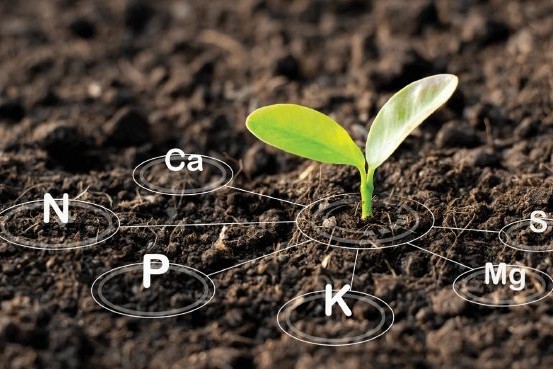Nothing comes from nothing
Nutrition for plants and animals have to come from somewhere, agricultural scientist Jacqueline Rowarth writes.

Nutrition for plants and animals have to come from somewhere, agricultural scientist Jacqueline Rowarth writes.
Nutrients 101 – they have to come from somewhere.
Whether the source is the atmosphere (carbon through photosynthesis, nitrogen through fixation and some nitrogen and sulphur deposition in rain) or the soil (phosphorus, sulphur, potassium, magnesium, calcium etc.) there is an energy cost involved. That energy also has to come from somewhere.
The ultimate source of that energy is usually the sun (photosynthesis, fossil fuel from photosynthesis millions of years ago, or evapotranspiration that draws nutrients in the transpiration stream, also driven by the sun).
The source of the nutrients is usually the parent material of the soil through the process of weathering, or geological deposits which are transported (using fossil energy from the sun) to the place where they are needed.
In the specific case of nitrogen from the atmosphere being fixed by rhizobia, and becoming available to the plant, the energy cost to the legume has been estimated at about 30% of photosynthesis. That energy is taken by the rhizobia to enable them to turn the nitrogen (N2) molecule in the atmosphere to biologically available ammonia (NH3).
In short, nothing comes from nothing and the concept of a system feeding itself works only if the material removed from the land to feed people matches the supply of nutrients through weathering and biological fixation.
Humans have shown this repeatedly through history. Itinerant populations moved on when the food supplies were exhausted. Swidden agriculture (slash and burn) hastened the cycle and allowed food plants to be grown in a clearing until the nutrients were depleted. And then the population moved on.
Yield longevity improved when the concept of return of waste was included in production – farmyard manure, night soil (check google) and guano (bird excreta rich in phosphate). New Zealand’s production was based on recognising what nutrients required for plant growth were missing in the soil and adding them1.
The knowledge has been developed by farmers, rural professionals and scientists working together since the 1890s, and the results have been presented in publications such as those produced by the Grassland Association of New Zealand2.
Of importance in achieving efficiencies has been the breeding of animals and herbage species to meet the NZ soils and environmental conditions, and the development of soil nutrient measurements calibrated to enable prediction of likely pasture response on NZ’s unique soils.
Despite the considerable body of work underpinning soil nutrient and pasture/animal management, there is renewed interest in organic and regenerative agriculture (e.g: Greenpeace.org.nz). Their recommendations include removing fertiliser inputs and using long pasture grazing (which involves trampling residues of 2500kg drymatter DM/ha into the ground with stock, including their urine and faecal matter) to replace nutrients removed in harvest.
The question must then be “where did the nutrients in the trampled grass, urine and faecal matter come from?”
The grass will have taken up nutrients in situ, some of which are now in the guts of the animals. The urine and faeces that the animals excrete on the grass probably came from what they ate a few hours beforehand. The excreta relocates the nutrients in concentrated areas, but the gain is offset by the fact that the nutrients have been removed from elsewhere which is now poorer in terms of nutrients.
This also applies to the farmyard manure common in organic agriculture – and the poultry and pig litter, and the vegetable and fruit waste from processing, that is the NZ equivalent. The pigs and poultry have been fed grain grown on areas elsewhere in the world (often with synthetic fertiliser to ensure good yields) and the nutrients in the litter are brought to the organic paddock… but the source paddock requires careful nutrient replacement to ensure it is not significantly depleted. The same applies to the vegetable and fruit waste.
Suggestions that synthetic fertiliser isn’t required because the soil has thousands of years of nutrients and animals, including worms and other organisms, will make the nutrients available in their excreta, also require examination.
Essential nutrients
It is true that there are greater quantities of essential nutrients in soil than are extracted by the traditional soil tests, but the point about soil nutrient tests is that they are calibrated for what might be available or needed for the season or year ahead.
To access all the nutrients would require destruction of the fabric of the soil and of the organic matter that is important in soil quality. As each year passes, nutrient supply is diminished and plant growth decreases, which means animal production decreases.
During the 1990s the ‘Withholding of superphosphate trials’ showed it took several years before the effect of not adding phosphate could be seen. The timeframe depended on the starting point, with higher P soils taking longer than lower P soils.
NZ soil scientists recommend that to maintain soil quality, what is removed in animal and plant harvest (or lost to the environment) must be replaced. If improvements in soil quality are required (development), more nutrients than removed will be required.
Fertiliser advice has been improved and refined over the years, but a basic truth remains – soil organisms cannot create mineral nutrients, they simply change them from one form to another, which can affect plant availability.
Many bacteria, fungi, insects and worms in the soil mineralise organic matter as an energy source, using and releasing the carbon, nitrogen and mineral elements that organic matter contains in the process. They do not create new nutrients.
Dr Ants Roberts, Ravensdown’s chief scientist,
has made this clear in the special issue of AgScience on regenerative agriculture3.
“The inescapable fact is that if plants are harvested (by machine or animal) and removed from the location they are grown in then eventually soil nutrients will be depleted to the point where it will be inevitable that externally sourced nutrients will need to be applied to sustain the soil’s life-supporting capacity.”
Dave Clark, recently retired Arable Chair of Federated Farmers NZ, has done the calculations for wheat.
“For my 10 tonne per hectare crop of milling wheat that is made into flour to bake the toast you ate for breakfast, 25kg of phosphorus, 13kg of potassium and 15kg of sulphur were removed from every hectare of that field. Those basic elements left my field and were present in the toast you ate this morning. So, my paddock now has 25kg, 13kg and 15kg less P, K and S per hectare in it than was stored prior to the crop being harvested.
If we do not replace those nutrients, then the field has been depleted.”4
Dave has also calculated that 250kg of nitrogen is needed to grow the crop and must be replaced.
Without fertiliser use it has been estimated that NZ’s soils would be able to support somewhere between half and a quarter of the animals grazed or crops grown. Such a decrease in agricultural production would be devastating for the country’s economy5.
Part of the ongoing development in precision agriculture in NZ is ensuring fertiliser is applied in the right place in the right form in the right amount at the right time. The 4Rs have enabled productivity growth in agriculture to continue6.
The take-home messages are in the law of the conservation of mass7 and the ongoing quest for efficiencies by rural professionals – including scientists and farmers.
- Dr Jacqueline Rowarth, Adjunct Professor Lincoln University, has a PhD in Soil Science (nutrient cycling) and is a director of Ravensdown, DairyNZ and Deer Industry NZ. The analysis and conclusions above are her own. jsrowarth@gmail.com
References
1 teara.govt.nz/en/fertiliser-industry/page-1
3 https://indd.adobe.com/view/693a575a-5482-4df0-bc4d-f986d3bce648
4 www.ravensdown.co.nz/expertise/opinion-the-realities-of-growing-nutritious-food
5 www.fertiliser.org.nz/Site/about/why_fertiliser.aspx
6 www.stats.govt.nz/information-releases/productivity-statistics-1978-2021/
7 www.nature.com/scitable/knowledge/library/the-conservation-of-mass-17395478/




